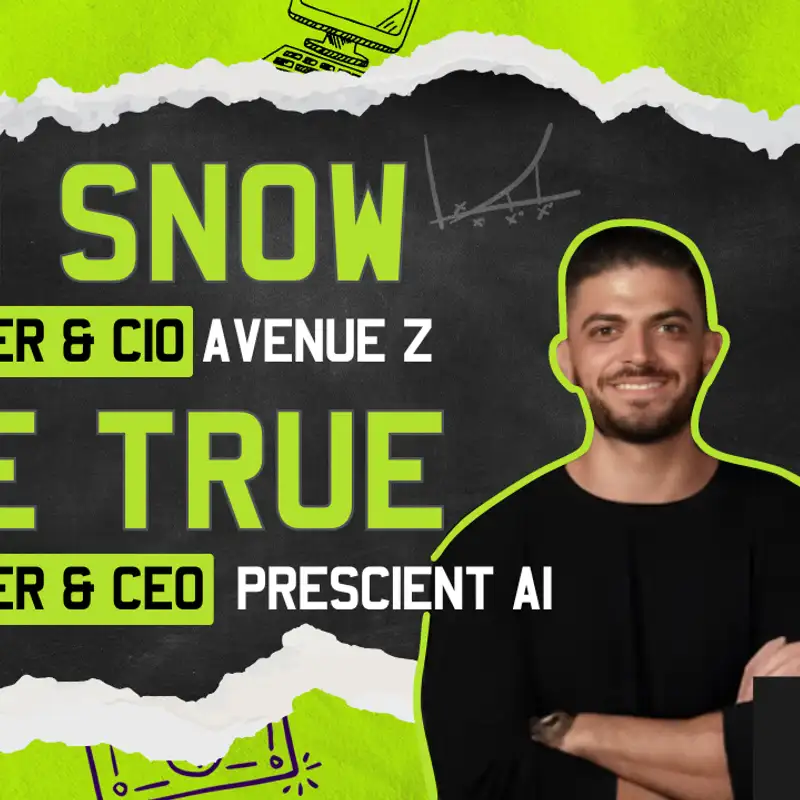EP015: Jon Snow & Michael True | Rally Museum
Download MP3Summary
The conversation revolves around data measurement and mixed media modeling. The guests, John Snow and Michael True, discuss their background and how they got into the field of AI and machine learning. They talk about their journey in developing a model to predict where artists should tour and how COVID-19 shifted their focus to music streaming. They explain the importance of accurate measurement in the music industry and the challenges of measuring the impact of marketing spend. They introduce Prescient, their solution that helps measure the impact of top-of-funnel marketing channels on bottom-of-funnel results. They differentiate between multi-touch attribution (MTA) and mixed media modeling (MMM), highlighting the limitations of deterministic attribution and the benefits of probabilistic attribution. The conversation explores the concept of deterministic attribution and its limitations, as well as the importance of understanding the halo effect in marketing. The guests discuss the value of probabilistic attribution and how it can provide insights into the impact of different marketing channels. They also touch on the role of influencers and the potential for measuring their halo effect. The conversation concludes with a discussion on the importance of knowing your customer and using data to make informed decisions.
Takeaways
The conversation revolves around data measurement and mixed media modeling. The guests, John Snow and Michael True, discuss their background and how they got into the field of AI and machine learning. They talk about their journey in developing a model to predict where artists should tour and how COVID-19 shifted their focus to music streaming. They explain the importance of accurate measurement in the music industry and the challenges of measuring the impact of marketing spend. They introduce Prescient, their solution that helps measure the impact of top-of-funnel marketing channels on bottom-of-funnel results. They differentiate between multi-touch attribution (MTA) and mixed media modeling (MMM), highlighting the limitations of deterministic attribution and the benefits of probabilistic attribution. The conversation explores the concept of deterministic attribution and its limitations, as well as the importance of understanding the halo effect in marketing. The guests discuss the value of probabilistic attribution and how it can provide insights into the impact of different marketing channels. They also touch on the role of influencers and the potential for measuring their halo effect. The conversation concludes with a discussion on the importance of knowing your customer and using data to make informed decisions.
Takeaways
- The guests have a background in AI and machine learning, with a focus on data measurement and mixed media modeling.
- They developed a model to predict where artists should tour, but shifted their focus to music streaming due to COVID-19.
- Accurate measurement is crucial in the music industry, especially with the diverse channels and platforms available.
- Prescient is a solution that helps measure the impact of top-of-funnel marketing channels on bottom-of-funnel results.
- Multi-touch attribution (MTA) is deterministic and focuses on individual user journeys, while mixed media modeling (MMM) is probabilistic and looks for statistical relationships between spend and revenue. Deterministic attribution has limitations and may not provide a complete understanding of the impact of marketing efforts.
- Probabilistic attribution can offer valuable insights into the halo effect and the impact of different marketing channels.
- Understanding your customer and their journey is crucial for effective marketing.
- Influencers can have a significant halo effect on brand awareness and sales.
- Data-driven decision-making is essential for optimizing marketing strategies.
Chapters
00:00 Introduction and Background
02:14 The Journey to Mixed Media Modeling
04:35 The Importance of Measurement in the Music Industry
07:46 Predicting Billboard Success with Mixed Media Modeling
10:02 Meeting People Where the Puck's Going to Go
15:10 Introducing Prescient: Measuring Top-of-Funnel Channels
16:08 Understanding the Difference Between MTA and MMM
22:15 The Limitations of Deterministic Attribution
23:43 Uncovering the Halo Effect in Marketing
29:37 The Role of Influencers in Driving Sales
32:29 Knowing Your Customer for Effective Marketing
35:45 Data-Driven Decision-Making in Marketing
Creators and Guests

Host
Rabah Rahil
CMO @FermatCommerce | Prev @TripleWhale. Live in Austin. Marketing, Tech, Outdoors, Photography, Sneakers and Stoicism.

